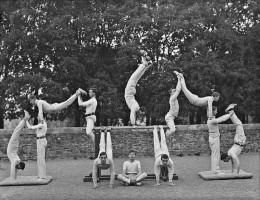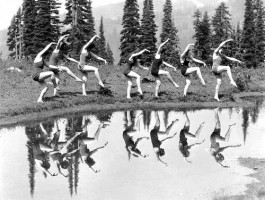Sometimes as educators we get caught up in the act of teaching and forget the people we are mentoring. Unless the children you have in your studio have a reason to connect to your material, the extent of your reach will be limited and your influence fleeting. Heather provides insight to help you structure your class as a guided experience rather than a traditional lesson plan.
From Questioning to Concert: Making Concert Dance Work
In the era of standardized assessment, there is a lot of talk about “teaching to the test”. While this generally refers to classroom teachers catering content and delivery to what may appear on those standardized tests, there is a fair amount of that happening in the dance classroom, too. What should be an exhilarating adventure […]
Dancer Speak: Re-Thinking How We Talk About Dance
When it comes to talking about dance, there are plenty of possibilities. Sometimes using “real-life” synonyms to the “dancer speak” that we are accustomed to allows kids to see how big ideas relate from discipline to discipline. Dance in the public schools provides an outlet for kids to express themselves but also a way to […]
Warming Up to Engage: Three Options to Get Your Dancers Moving
The role of warm-up progresses as our understanding of dance changes. This is true whether our role is that of a student or a teacher. For many young dancers, warm-up is something to be endured before set free to really “dance” in the subsequent segments of class. For my students, it is what they are […]
Why Dance Matters: Survival of the Fittest
The dance classroom is more than a studio; it is a laboratory. It is the training ground for an unforeseeable future. In the age of standardized testing, arts environments can provide the safe havens where mistakes are treated as discoveries and expression is celebrated. Higher order thinking is a natural part of the performance and […]
Hitting the Books: Two Valuable Reads from Oxford University Press
Every so often, I meet a student who seems older than their years with interests far more sophisticated than those of their peers. Despite their young age- middle school, high school, early college- their understanding of the world and their desire to see the big pictures leaves an impression and sets a tone. For these […]







